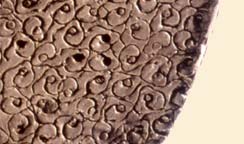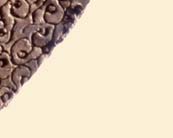 |
 |
||||
 |
|||||
 |
|||||
 |
|||||
 |
|||||
 |
|||||
|
|||||
 |
|||||||||||||||||||||
Raku - IntoductionRAKU is a japanese glaze firing technique, originating from the 16th century. Originally it was used to create bowls and cups to be used in the traditional tea ceremony, but all of this history, that usually forms the introduction to any publication on raku, is far from the present day meaning of raku. Like with many other foreign century-old traditions, the veni-vidi-vice of american culture not only meant that these concepts were copied, modified and implemented in western culture; americans even became the original inventors. Similar to sushi being a japanese variety on the well-established California roll, raku became a western glazing technique that some nasty japanese tried to monopolize. Despite the fact that these overwhelmed japanese were in their right, what is currently meant with raku is closer related to the western implementation which started in the sixties of the previous century than to the original japanese idea. Still there are some elements inconceivably associated with eastern culture like a delicate balance between control and coincidence, between doing and letting go.
Right now, I'm writing this piece of HTML in Window's notepad and I realize how
similar HTML is to raku. Analogies and metaphores can probably be found in numerous
places but right now I'm c o d i n g HTML and the following similarity springs to
mind which may explain my attraction to raku: Thus the glaze is the part of the work that reflects the raku nature of the process. With other techniques, the firing usually begins when the creative process has been ended. It perpetuates all the efforts that have been put in the design of the pieces and the application of the glaze. In the ideal case the piece comes out of the kiln just as it was 'meant to be'. The situation is completely different in the raku approach. Here the firing and subsequent cooling down of the work largely determine its appearance.
The applied chemistry, the glaze recipe set a predictable and reproducible starting
point. The nature of the ceramic surface it is applied on and the process of firing
and cooling down introduce a tremendous amount of variables that are controllable
to various degrees, but which allow weeks of experimentation with just a single
recipe. |
|
||||||||||||||||||||
|
© 2002 Hans de Brouwer |
|||||||||||||||||||||
Last update:



